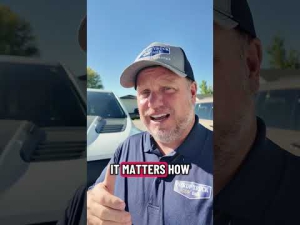The obsolescence domino effect

Every parts operation deals with obsolescence, and while there any many great strategies for discarding already accumulated obsolescence, there’s no cure quite like prevention. Even now, there are parts in your inventory that don’t meet stocking criteria and are almost certain to shift to obsolescence. Without the right stocking settings and a consistent strategy to get rid of parts before they affect your obsolescence rate, these parts quickly accumulate and cost you much more than profit taking up precious stocking space and creating an unmanageable situation for parts managers. Here are the steps you can take to prevent the obsolescence domino effect and improve your overall inventory health.
Breaking it down
As with most inventory issues, the first step to making shifts in strategies is to get a clear picture of how much obsolescence you’re dealing with and what the main sources are. For many operations, this may be much more work than running a few simple reports. For some operations, a physical inventory will be needed to match up the books to the shelves. Others may have accurate inventory but will need to dig deeper into their current idle and forced stock to identify the root source. While demand is always changing, you should have automatic settings in place that immediately flag, adapt stocking criteria, and discard inventory headed for the obsolescence bin. To learn more about the categories of obsolescence and how to find your excess, forced and technical obsolescence stock, click here. Special orders can also be a big source of obsolescence with poor follow-up resulting in unresolved repairs.
Creating prevention systems
Once you’ve identified the main sources of idle, forced, and excess stock in your inventory, it’s time to make a plan for prevention. By staying in a proactive prevention mindset, you can interrupt the domino effect and create a consistently healthier inventory. If you’ve found most of your obsolescence is coming from over-ordering, create a system that tracks which technicians are over-ordering and returning the most part by simply putting the technician number in an unused field on the computer, such as BIN2, COMMENT, or OTHER fields. If special orders are a big contributor, consider building a compensation plan based on customer returns for special order parts and utilize your BDC or hire a Special Order clerk that is totally responsible for ensuring customers return for special-ordered repairs. If your manufacturer program is forcing parts into your inventory that do not sell and aren’t warranted, find the balance between remaining compliant while also denying stocking suggestions for parts that don’t sell. In some cases, dealerships can become storage facilities for manufacturer parts that aren’t in high demand- don’t let this happen to you.
Prevention, prevention, prevention
Now we’re not saying it will be easy to get there, but getting ahead of obsolescence is the key to unlimited expansion in your parts department. Obsolescence that sits at 18% or higher and keeps coming back is a major red flag- your goal should be 0% (we’ve seen it!). Parts with no sale or no receipt in 7 months have a 95% chance of becoming obsolete with that number increasing exponentially as the months go on. If 30%-50% of your inventory is headed towards obsolescence, precious shelf space and capital is being wasted.
PartsEdge has helped countless dealerships reduce, predict, and offset their obsolete inventory through our custom matrixes and daily optimizations for over 20 years. Our powerful monthly parts inventory optimization tool was designed by a Parts Manager and a DMS specialist who witnessed the gap between the demands on Parts Managers and the lack of resources to get everything done. PartsEdge saves Parts Managers hundreds of hours each year by taking all the guesswork out of DMS management and sourcing setup and optimization allowing them to focus on creating a successful operation. As a result, our clients see an average 20% drop in total inventory, 15% less idle inventory, a 50% increase in ROI, and a 20% increase in parts sales. If you’re ready to put our parts power tool to work, send us a message! Our testimonials speak for themselves.






